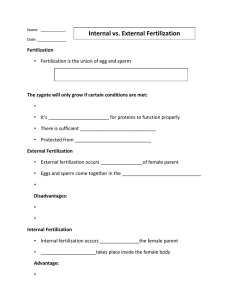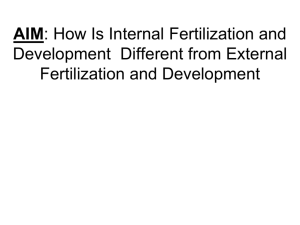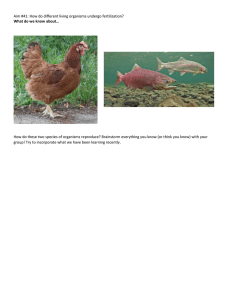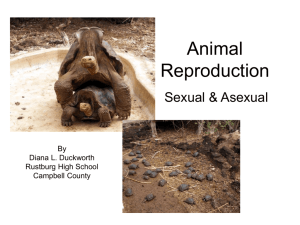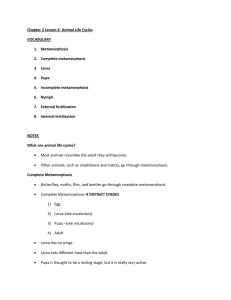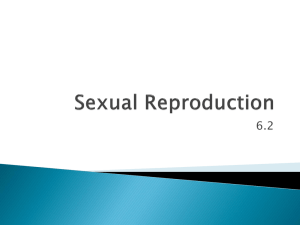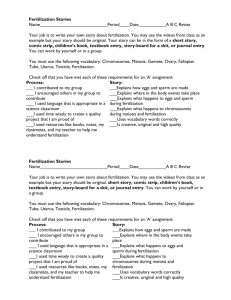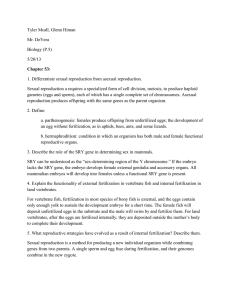Animal Digestion
advertisement
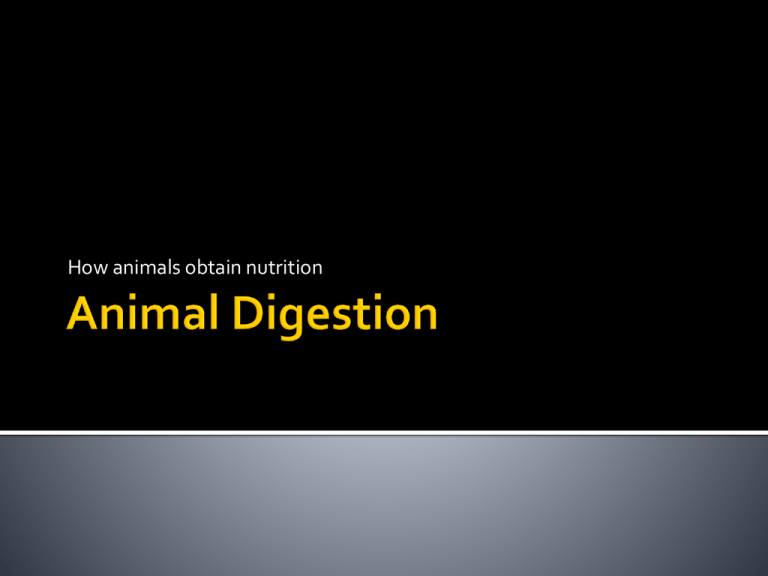
How animals obtain nutrition Mouth – takes in food Esophagus – transports food from mouth to stomach(s) Stomach Crop – stores food Gizzard – grinds food Intestine – absorbs nutrients Rectum/anus – expels waste Ingest soil, remove nutrients http://www.ncsu.edu/scivis/lessons/earthworm/Overview.html Some eat: Plants Animals (other insects) Decaying material (poo and dead things) Mouthparts are adapted to type of food: Butterfly has long tube to “drink” nectar Ants have sharp mouthparts for cutting wood and seeds Eat other fish (and their eggs), insect larva, worms, shrimp, plankton, algae… Eat snails, insects, worms Eat small invertebrates, mammals, amphibians, other reptiles, and plants Eat seeds, nectar, fruit, insects, worms, fish Herbivores Carnivores Omnivores How animals make offspring Asexual – a genetically identical copy is made from one parent; NO VARIATION! Sexual – fusion of gametes (ex. sperm and egg); combination of genetic material from two parents Children are similar to but different from each other and parents VARIATION!!! Hermaphrodites Can fertilize each other Male and female Internal fertilization 2 kinds of life cycles Incomplete metamorphosis (gradual growth) ▪ Egg-nymph-adult Complete metamorphosis (juvenile goes into dormant stage, then changes to adult) ▪ Egg-larva-pupa-adult Females lay unfertilized eggs (“spawning”) Males deposit sperm on top of eggs “external fertilization” Male sits on top of female until she lays unfertilized eggs (“amplexus”) External fertilization Many different mating calls Internal fertilization (male puts sperm inside female’s body) Hard-shelled (“amniotic”) egg is laid External development – babies develop outside female’s body Internal fertilization, external development Many different courtship dances High level of parental care http://australianscreen.com.au/titles/echidnasurvivor/clip3/ Internal fertilization, internal development (most) 3 kinds of mammals: Placental ▪ Develops fully in womb, nourished by placenta Marsupial ▪ Partially develops in womb, then in pouch Monotremes ▪ Lay eggs

